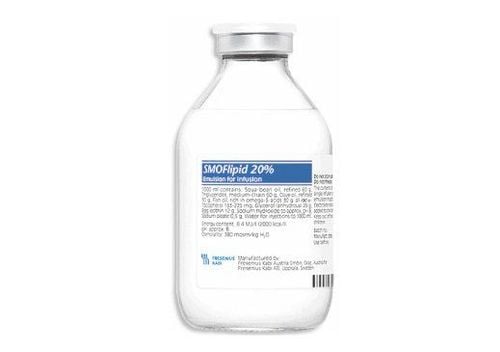This is an automatically translated article.
Lactose is the main sugar found in animal milk and dairy products, it is a source of glucose for brain activity, softens stools, and creates a good environment for beneficial bacteria such as: Bifidus and Lactobacillus help with immune and digestive system development especially in children. Lactose intolerance also has some effect on people who use this type of sugar.1. What is Lactose?
Lactose is the main sugar (or carbohydrate) naturally found in milk. Lactose is a large sugar molecule made up of two smaller sugar molecules, glucose and galactose. In order for lactose to be absorbed into the intestines and body, it must first be broken down into glucose and galactose. These two sugars are then absorbed by the cells lining the small intestine. The enzyme is responsible for breaking down lactose into glucose and galactose. These enzymes are located on the surface of the cells lining the small intestine and are called lactase enzymes.
2. The role of lactose
Lactose provides glucose and galactose for the body. Breast milk contains 7.2% lactose (only 4.7% is lactose in cow's milk), providing up to 50% of the infant's energy needs (cow's milk provides up to 30% of the infant's energy needs. Infant). Although glucose can be found in a number of foods, lactose is the only source of galactose.
Galactose has different biological functions and effects in neurological and immune processes. Galactose is a component of several macromolecules (cerebroside, ganglioside and mucoprotein), and it is also an important component of nerve cell membranes. Furthermore, Galactose is also a component of molecules present on blood cells that determine ABO blood group.
According to recent studies, lactose may play a role in the absorption of calcium and other minerals such as copper and zinc, especially during infancy. Furthermore, if it is not digested in the small intestine, it can be used as gut probiotics as a nutrient (prebiotic). Lactose and other lactose also promote the growth of bifidobacteria in the gut and may play a long-term role in combating the aging-related decline of certain immune functions.

Lactose có mặt trong sữa và cung cấp năng lượng cho trẻ sơ sinh
3. Lactose-related condition
3.1. Lactose maldigestion Lactose maldigestion is difficult to digest lactose. It is of interest to almost everyone in the world. It is a decrease in the normal activity of the enzyme lactase. This enzyme converts lactose into glucose and galactose, both of which are used by the body for energy and play a role in various bodily functions.
Lactose maldigestion occurs after weaning, when lactase enzyme activity begins to naturally decline. For most people, lactose maldigestion produces few or no symptoms. Lactose maldigestion varies between different populations as do the different dairy products consumed during adulthood. Decreased lactase activity is more common in Aborigines of Asia-Pacific, Africa, South America, Southern Europe, and Australia than in people of Northern European descent.
3.2. Lactose intolerance Lactose intolerance is the inability to digest lactose leading to intestinal symptoms such as bloating, diarrhea and gas. However, these symptoms that are not specific to lactose intolerance are associated with psychological factors, such as: stress, emotional trauma, or intestinal dysfunction (occurs during infection) infection or malnutrition).
This is also one of the common causes of diarrhea in children when drinking milk. To overcome this situation, mothers should take their children to the doctor for timely advice and treatment. At the same time, it is advisable to choose the right milk for the child to help the child develop comprehensively.
3.3. The difference between the two conditions There is a difference between lactose maldigestion and lactose intolerance. In both of these conditions only a small fraction of the lactose is digested, the undigested lactose entering the colon.
However, in some specific cases, bacterial fermentation of undigested lactose in the colon leads to one or more symptoms such as bloating, diarrhea, and gas. This is called lactose intolerance. Therefore, lactose intolerance is a lactose disorder that results in one or more of these symptoms.
Furthermore, lactose intolerance is associated with very few people, while lactose maldigestion is associated with about 70-75% of the world population.

Một số trường hợp gặp tình trạng không dung nạp lactose
4. What Causes Lactose Intolerance?
In the intestines, lactose is converted by the enzyme lactase into glucose and galactose, both of which are simpler than the sugar in milk. These sugars will be used by the body for energy and participate in various functions in the body. Most people have trouble digesting lactose. It is due to the normal decline in lactase enzyme activity after weaning, also known as lactase non-existent. Symptoms of lactose intolerance usually do not occur until the lactase enzyme activity is less than 50%.
At the genetic level, the gene that encodes the lactase enzyme, the LCT, usually becomes less active with age. In some specific cases, the production of lactase enzyme in the intestines is maintained and they are able to digest lactose from an early age. Meanwhile, in others, this ability is lost and may experience intestinal upset when consuming this sugar.
Lactose intolerance occurs when lactose maldigestion leads to one or more unpleasant intestinal symptoms such as: Bloating, diarrhea, and gas.
Lactose maldigestion is recommended to be consumed in small amounts (up to 12g in a single dose and up to 24g per day). Yogurt is a dairy product that contains live bacteria that help digest the lactose contained in it, or cheeses that contain little or no lactose are good alternatives to lactose maldigestion.
5. The impact of lactose intolerance and health
Lactose or lactose intolerance is not a disease and it is not harmful to health. However, they reduce quality of life.
Lactose or lactose intolerance is diagnosed as one of the reasons to limit or avoid dairy. Therefore, it will affect health by nutrient deficiencies that can occur due to dairy avoidance, such as low calcium intake. According to a statement by the European Food Safety Authority, low calcium intake can impair the ability to maintain normal bones and teeth.
To get the recommended amount of calcium, people with this condition should use processed milk forms such as cheese, yogurt...

Người dùng có thể sử dụng sữa chua thay thế để cung cấp lượng canxi cần thiết
6. The relationship between lactose intolerance and milk allergy
Lactose intolerance is not associated with a milk allergy. Allergies are the sensitization of the immune system to certain factors in the environment that cause problems for most people.
In cow's milk allergy, the immune system reacts to one or more proteins found in cow's milk such as casein and whey protein. Symptoms of this allergic condition include hives, swelling, nausea and wheezing and can arise within an hour and even up to 72 hours after drinking cow's milk.
As for lactose intolerance, which is related to lactose, this is not a protein but a natural sugar found in milk. It's inability to digest lactose leads to bloating, diarrhea, and gas. Lactose is not a milk protein but a sugar, and it is not targeted by the immune system.
People with cow's milk allergy should avoid milk and dairy products while people with lactose intolerance should avoid milk and dairy foods but should consume milk in moderation, possibly is up to 12g in a single drink or up to 24g in a day. Lactose intolerance is also recommended to consume dairy products such as yogurt - which facilitates the digestion of lactose or certain cheeses such as aged cheeses, which contain very little no lactose.
Vinmec International General Hospital with a system of modern facilities, medical equipment and a team of experts and doctors with many years of experience in medical examination and treatment, patients can rest assured to visit. examination and treatment at the Hospital.
To register for examination and treatment at Vinmec International General Hospital, you can contact Vinmec Health System nationwide, or register online HERE.
References: medicinenet.com, webmd.com, worldgastroenterology.org, en.wikipedia.org













